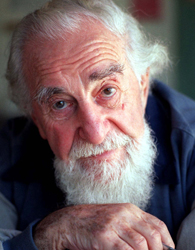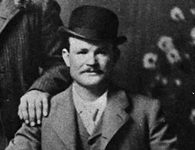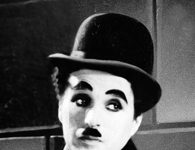Al Hirschfeld demonstrated prodigious artistic talent at an early age. As an adult, his technique was deceptively simple; he harnessed the power of a single line to convey a complex, richly emotional message. He is famous for his wry, affectionate caricatures of the stars, and his penchant of hiding his daughter’s name within each drawing.
Al Hirschfeld’s Early Days
Albert Hirschfeld was born on June 21, 1903, in St. Louis, Missouri; but by the time he was 12, his family had moved to New York City.
Hirschfeld displayed precocity for the arts; his early interests were in painting and sculpture. He enrolled in the Art Students League and displayed such a profound level of creative conviction that Selznick Studios hired him as an artistic director when he was only 17.
In 1924, he fled the film studio for the artistic smorgasbord of Europe. This decision coincided with his emerging interest in the potential of caricature art, spurred by his friendship with the Mexican-American artist Miguel Covarrubias. A visit to the tropical climes of Tahiti and Bali gave him an appreciation for the simplicity of line and shadow.
“The Balinese sun seemed to bleach out all color, leaving everything in pure line,” recalled Hirschfeld.
Sources in this Story
- PBS: American Masters: Al Hirschfeld
- Library of Congress: Al Hirschfeld: Beyond Broadway
- The New York Times: Al Hirschfeld, 99, Dies; He Drew Broadway
- Al Hirschfeld.com: The Drawings Catalogue
- eOneill.tv: Al Hirschfeld
Hirschfeld’s Caricature Work
In the mid-1920s, Hirschfeld made a sketch of French playwright and actor Sacha Guitry upon a playbill during a performance. A friend liked the informal drawing and asked him to redraw it on a blank sheet of paper. When the New York Herald Tribune printed the sketch, other papers took notice of Hirschfeld’s distinctive style and consistent requests for freelance work followed.
His caricatures of actors and celebrities immediately struck a chord with the public. His elegant, humorous portrayals were a sign to the subject that he or she had “made it.”
Hirschfeld drew a number of lithographs for The New Masses, a Communist magazine, but felt uncomfortable working for a publication with explicit ideological alignment. “I have ever since been closer to Groucho Marx than to Karl,” he noted in “The World of Hirschfeld.”
After the birth of his daughter Nina in 1945, Hirschfeld began hiding her name in his pieces. A number next to his signature told the viewer how many “Ninas” to look for. The subliminal dedications were unexpectedly popular with readers, who derived amusement from weekly Nina hunts. They also had a more practical purpose; according to The New York Times, looking for Ninas became part of target-spotting training for bomber pilots.
For most of his lengthy career, Hirschfeld dedicated himself to one of the more obscure qualities of art: its ability to convey truth. In a 1955 watercolor of Lucille Ball and Desi Arnaz, Desi’s gaping pupils have a spacey quality that cuts through the gloss of the limelight. A 1999 drawing of Liza Minnelli is imbued with the actress’s manic energy, but the eyes, mouth, and sloping shoulders carry a tinge of sadness. Critics admired Hirschfeld’s ability to suffuse even the sparest of drawings with a wellspring of emotion.
“I am still enchanted,” Hirschfeld once admitted, “when an unaccountable line describes and communicates the inexplicable.”
The Rest of the Story
Hirschfeld died on January 20, 2003, at the age of 99. In an interview conducted shortly before his death, he spoke about the unpredictable nature of theater, the change of New York’s social mores, and his appreciation of Eugene O’Neill’s work. His rosy countenance and thick white beard recall images of Saint Nicholas. The camera follows his fingers as they ink the outline of yet another caricature.
When one looks over the caricatures that Hirschfeld drew of himself, his drooping eyelids anchor a contemplative expression. One gets the sense that art, for Hirschfeld, was akin to Wordsworth’s poetry: “emotion recollected in tranquility.” Perhaps his softly shut eyes brought him back to the magical darkness of the theater. Broadway honored that love by naming a theater after him.
This article was originally written by Devin Felter; it was updated May 23, 2017.











